10 Best Inverter Generators for RVs & Camping in 2024 – Top Picks & Reviews
-
- Last updated:
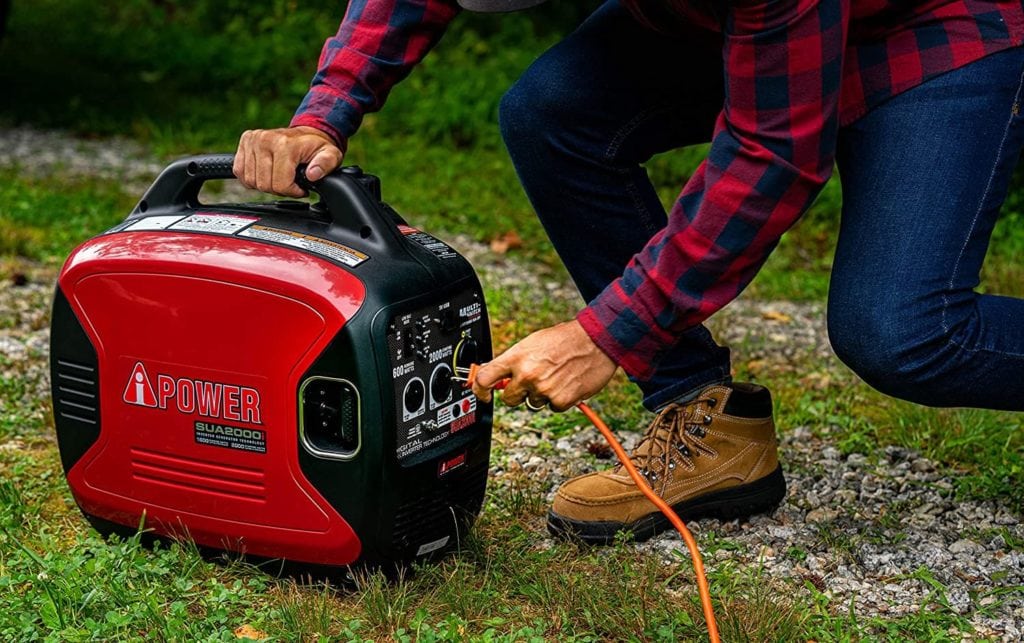
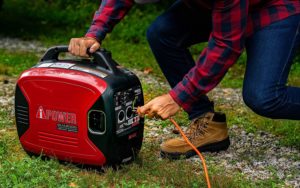
Suppose you spend a lot of time camping, especially in an RV. In that case, you will need a generator to power some of the necessary items like the refrigerator and the electric coffee pot. There are plenty of brands available, though, and choosing the best one to take with you isn’t always easy.
We’ve selected 10 different models to review for you so you can see what brand is right for your needs. We’ve covered gas and battery-powered generators to help you see the pros and cons of each and learn more about them. We’ve also included a short buyer’s guide where we take a close look at how generators work and what you should look for while you shop.
Join us while we discuss output power, fuel type, loudness, runtime, and more to help you make an educated purchase.

A Quick Comparison of Our Favorites in 2024
| Rating | Image | Product | Details | |
|---|---|---|---|---|
Best Overall
 |
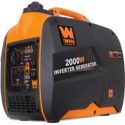 |
WEN 56200i Portable Inverter Generator |
|
CHECK PRICE |
Best Value
 |
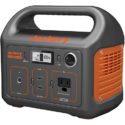 |
Jackery Portable Power Generator |
|
CHECK PRICE |
Premium Choice
 |
 |
Generac 7127 iQ3500 Portable Inverter Generator |
|
CHECK PRICE |
|
|
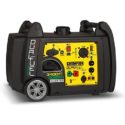 |
Champion 100263 Portable Inverter Generator |
|
CHECK PRICE |
|
|
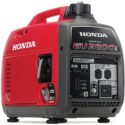 |
Honda EU2200i Portable Inverter Generator |
|
CHECK PRICE |
The 10 Best Inverter Generators for RVs and Camping
1. WEN 56200i Portable Inverter Generator – Best Overall

The WEN 56200i Portable Inverter Generator is our pick for the best overall inverter generator for RVs and camping. It uses a 79.7 cubic centimeter (cc) 4-stroke engine to deliver 1,600 watts of continuous power and 2,000 watts peak power. It has a 1-gallon fuel tank and can run up to 9.4 hours on a single tank of gas. It also features a USB port so you can use it to charge a smartphone. You can also purchase a WEN parallel kit, which allows you to link multiple units together for even more power, and the quiet 53 decibels (dB) of noise produced won’t bother the other campers.
We liked the WEN 56200i, and it had no problem powering all of our camping equipment. The only thing that we can complain about is that it stands very tall and may not fit in the same space as other generators. It would also benefit from a set of wheels, even though it is lightweight at only 48 pounds.
- 2,000 watts
- 53 dB noise level
- 7cc 4-stroke engine
- 48 lbs
- 1-gallon fuel tank
- 4-hour runtime
- USB port
- High profile
2. Jackery Portable Power Generator – Best Value
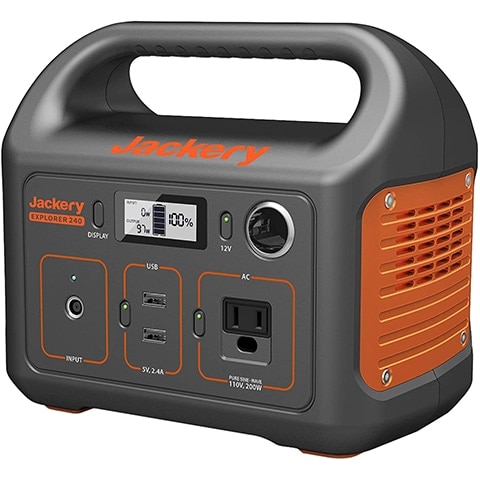
Jackery Portable Power Generator is our pick for the best inverter generator for RVs and camping for the money. This generator is eco-friendly and runs off a 14.4-volt lithium-ion battery that you can charge via a wall outlet or your car’s cigarette lighter. You can also purchase a solar cell and use that to power the generator as it’s solar-ready.
The downside to the Jackery model is that it doesn’t generate much power and is really only suitable as a laptop and cell phone charger. If those are the only devices you need to power, then it provides a green way to do so, but if you need to power refrigerators, kettles, and other devices, then 200 watts of continuous power with a 400-watt max will not be enough. It also takes a long time to charge a laptop, so most devices will spend most of the time connected to the generator.
- Eco-friendly
- 4-volt lithium-ion battery
- Solar ready
- Multiple ways to charge
- 6 lbs
- 400 watts max
- Slow charging
3. Generac 7127 iQ3500 Portable Inverter Generator – Premium Choice

The Generac 7127 iQ3500 Portable Inverter Generator is our premium choice inverter generator for RVs and camping. It uses a powerful 80cc 4stroke engine to produce up to 3,500 watts for you to use to power and charge your devices. It features USB ports for your smartphone and laptop, and the all-steel enclosure is durable enough to last many years, even under harsh conditions. It has a 1.06-gallon tank, and the electric start takes much of the work out of getting the machine running. You can get up to 11 hours of power from a single tank.
The biggest downside to the Generac 7127 iQ3500 that we experienced was that it’s quite heavy to move to the campfire at 109 pounds. We also would have been happy with a set of wheels.
- 3,500 watts
- Digital display
- USB ports
- Steel enclosure
- Electric start
- 06-gallon tank
- 11 hours per tank
- 80cc 4-stroke engine
- 109 lbs
4. Champion 100263 Portable Inverter Generator

The Champion 100263 Portable Inverter Generator is a dual-fuel generator, meaning you can use either gas or propane to run it. It uses a 192cc engine to deliver up to 3,400 watts max and does so while creating only 59 dB of noise. It’s air-cooled and can run for 7.5 hours on a tank of gas or 14.5 hours on a tank of propane. Economy mode will help conserve fuel to keep the generator running longer if you don’t have too many devices drawing current, and the quick touch panel makes adjustments easy.
Unfortunately, at 95.7 pounds, the Champion 100263 is going to be heavy for some people to get into position. It also requires 12 volts of battery power even if you intend to use the recoil start, which can be a hassle if you didn’t charge or replace the battery.
- Dual fuel
- Electric start
- 59 dB noise volume
- 3,400 watts max
- 192cc engine
- Air-cooled
- 5-hour runtime with gas, 14.5 with propane
- Economy mode
- Quick touch panel
- 7 lbs
- Requires battery power to use recoil start
5. Honda EU2200i Portable Inverter Generator
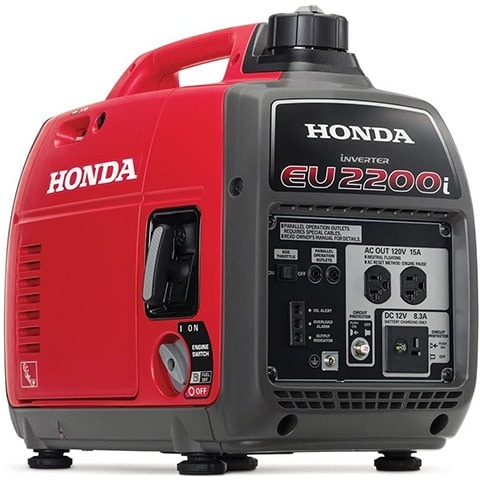
The Honda EU2200i Portable Inverter Generator is a popular generator by a company synonymous with durable and powerful engines. It has a 3.6-horsepower (HP) engine to deliver up to 2,200 watts, and you can link two machines together for 3,600 watts. You get between 4 and 9.6 hours of runtime depending on how many devices you are powering. It’s lightweight at only 40 pounds, so it’s easy to get out to the campsite.
The biggest problem we had while trying out the Honda EU2200i was that it was extremely hard to get started and often needed an excessive number of pulls to start running. There are also no USB ports to charge your phone or laptop, and there have been two recalls on it so far, so be sure you get an up-to-date model.
- 48 to 57 dB noise level
- Can link to a second model
- 6 hours runtime
- 40 lbs
- 2,200 watts
- Two recalls
- Hard to start
- No USB
6. A-iPower SUA2000iV Portable Inverter Generator

The A-iPower SUA2000iV Portable Inverter Generator is a 2,000-watt generator that weighs only 46 pounds. A 79cc engine powers it, and it produces only 58 dB of noise while operating. Low-idle technology helps you conserve fuel for longer runtimes when you require less power. A USB port lets you charge your phone and laptop with clean power. This makes it a great choice as the best inverter generator for camping.
We found it very challenging to start the A-iPower SUA2000iV, especially when it was new. Some fiddling with the choke switch can help it start a little easier. There is also no gas shutoff to help burn out excess fuel in the engine when you finish working to help prevent the carburetor from gumming up.
- 2,000 watts
- 46 lbs
- 79cc engine
- 58 dB noise level
- Low-idle technology
- USB port
- Hard to start
- No gas shutoff
7. Westinghouse iGen2200 Portable Inverter Generator
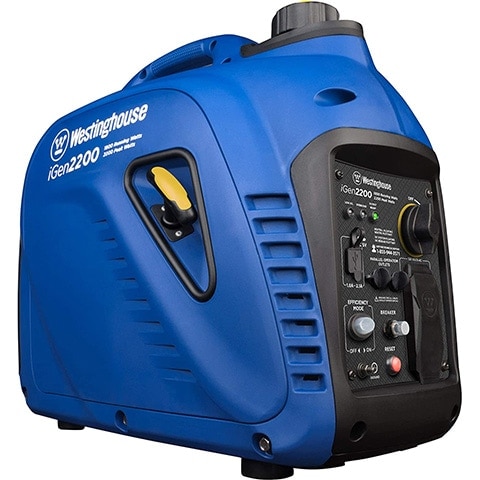
The Westinghouse iGen2200 Portable Inverter Generator provides the user with a powerful 80cc 4-stroke engine that can deliver up to 2,200 watts while keeping the noise level down to 52 dB. It has a 1.2-gallon tank that can run for up to 12 hours before requiring a refill. It’s parallel capable, so you can hook up more than one unit for additional power, and it has 2 USB ports for charging your smartphone or laptop.
The problem we had with the Westinghouse iGen2200 was that it required a significant amount of maintenance before starting it the first time, including adjusting the spark plug and cleaning the carburetor. Even after we performed the maintenance, it would still occasionally send out puffs of smoke and would sputter every so often.
- 80cc 4-stroke engine
- 2,200 watts
- USB outlets
- 52 dB
- 2-gallon tank
- 12-hour runtime
- Parallel capable
- Smoky
- Sputters
- Requires maintenance before starting
8. Pulsar G2319N Inverter Generator
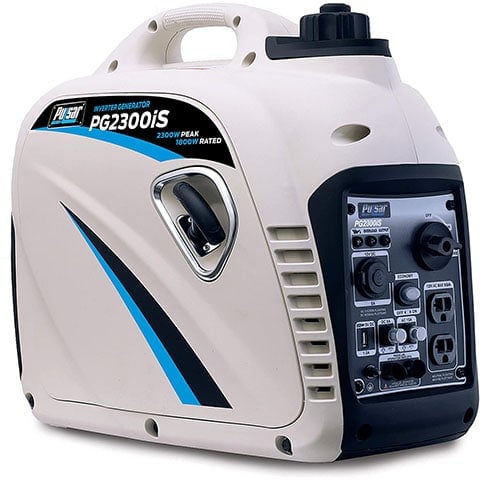
The Pulsar G2319N Inverter Generator features an 80cc 4-stroke engine that can deliver up to 2,300 watts of power. It keeps the engine noise down to 59 dB and includes a USB port so you can charge your phone and laptop. The 1.18-gallon tank will keep the generator running for up to 4.8 hours at half-load.
The biggest problem with the Pulsar G2319N is a constant engine whine that occurs while the generator is running. It’s not overly loud, but it does catch your attention and can annoy surrounding campers. Another problem we had was that it is hard to change the oil without spilling it into the compartment which could lead to drips.
- 2,300 watts
- 47 lbs
- USB port
- 59 dB
- 18-gallon fuel tank
- 80cc 4-stroke engine
- Engine whine
- Hard to change the oil
9. Briggs & Stratton P3000 Inverter Generator
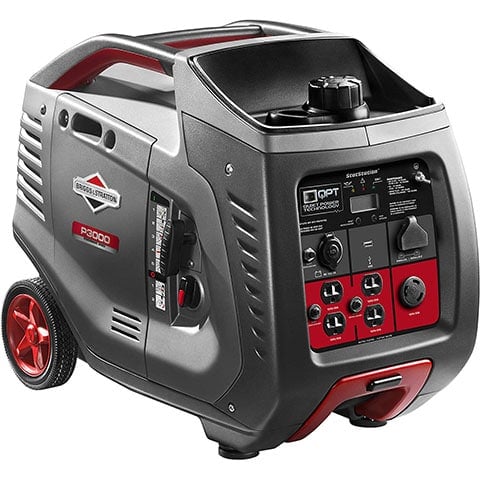
The Briggs & Stratton P3000 Inverter Generator is a 3,000-watt generator with a 1.5-gallon fuel tank. It has a powerful 171cc engine that keeps the noise down to only 59 dB. Its 1.5-gallon fuel tank allows the generator to run for up to 10 hours before needing a refill, and the LCD screen is easy to read and keeps you updated with the output stats, remaining fuel, and other important details. The attached wheels make it much easier to move into position.
The downside to the Briggs & Stratton P3000 is that it’s fairly heavy at 96 pounds, it uses a flimsy plastic material for the housing, and the handle Is especially weak. Of all the brands on this list so far, this is the most likely to crack.
- 3,000 watts
- 5-gallon fuel tank
- 10 hours run time
- 171cc engine
- LCD screen
- Includes wheels
- 59 dB
- 96 lbs
- Flimsy handle
- Not durable
10. PAXCESS Portable Camping Generator
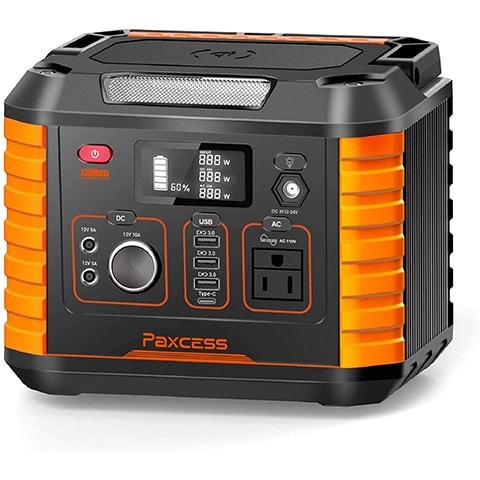
The PAXCESS Portable Camping Generator is another battery-powered generator that you can recharge by plugging it into the wall. It has a large internal battery that you can use to recharge your smartphone or laptop several times before needing a recharge, and at only 7.1 pounds, you could almost keep it with you full time. The LED display is easy to read, and you can even do wireless charging on the top of the machine. It also has your standard outlet and is environmentally friendly, using no fuel or emitting any fumes.
We are big fans of the PAXCESS generator and many brands like them, but since we are talking about RVs and camping, it’s probably not going to be powerful enough for your needs. It only puts out about 330 watts continuously and is only really suitable for recharging laptops and other similarly small devices. Another problem with this brand is that it loses its charge quickly once you unplug it, so you don’t benefit much from the large battery.
- Large capacity
- Wireless charging
- LED display
- Battery-powered
- Environmentally friendly
- 1 lbs
- 700 watts
- Loses charge quickly

Buyer’s Guide – How to Choose the Best Inverter Generator for RVs and Camping
Here are some things to look at while you are choosing an inverter generator for your camping trip.
How Does a Generator Work?
A generator works by using an engine to turn a power generator. Usually, a gas-powered motor spins an alternator very similar to the one in your car to create electricity. Alternators create electricity by moving a copper wire through a magnetic field. The faster it moves through the field, the more electricity it produces.
What Is an Inverting Generator?
An inverting has all the internal parts that a normal generator has to produce alternating current (AC). But since engine performance determines the quality of electricity, it can vary slightly with even well-running machines but can degrade further with an engine running rough because it will be turning the alternator at a varying speed. This type of power is “dirty electricity.” It will work fine for most older electronics like an electric coffee pot or a refrigerator. However, modern computerized circuits in laptops and many other devices will not work well with this type of power and require something “cleaner.”
Inverting generators clean up the power by adding two more stages to the standard generator. The first stage converts the dirty alternating current into direct current (DC) like that from a battery. The second stage turns the DC back into AC, but this time the AC is not dependent on a smooth operating motor because it makes the AC from the DC, so the power provided to your devices is very clean with no fluctuations. The motor can run rough, and as long as it supplies enough current for the generator to turn it into DC, clean AC will be output.
Fuel Type
The inverting generators on this list get their power in one of three ways, gasoline, propane, and electricity.
Gasoline
Gasoline is the most common way to power a generator and is also the original way. Gas generators are inexpensive and provide plenty of power, and the engine is well-known and relatively easy to repair and maintain. Of the three types, gasoline is the worst for the environment and produces the most harmful emissions. It will also require the most maintenance to keep it running efficiently.
- Inexpensive
- Powerful
- Harmful emissions
- Lots of maintenance
Propane
Propane is very similar to gas, but it is a little cleaner and a little more expensive. While still bad for the environment, they are much more efficient and produce less exhaust. The fuel also burns more efficiently, so you will need less of it. However, the engines aren’t as ubiquitous, so it will be harder and more expensive to repair. It’s also slightly harder to obtain propane than gas.
- Powerful
- Cleaner than gas
- Expensive
- Bad for the environment
- Harder to obtain
Electric
Electric generators are the last type you will find on our list, and we should point out that these are not true inverting generators since they do not convert dirty power to clean. Since they produce clean energy, they get lumped in with inverters. You will need to charge an electric generator before using it, either by solar power or by plugging it into a wall or car cigarette lighter. These generators do not produce any noise and are safe for the environment, but they are often more expensive, don’t put out much power, and are quite difficult to repair.
Electric generators are well suited to charging smartphones and laptops and are perfect for making a portable workstation for those that work from home on a laptop. However, they will not deliver enough power to run a refrigerator or air conditioning unit often found in RVs.
- Quiet operation
- Environmentally friendly
- Low power
- Difficult to repair
- Expensive
Power Requirements
One of the most important things to do before purchasing a generator is determining how much power you require. You determine your power needs by finding out how many watts each of your devices requires and adding them up.

For example:
- 2 75-watt light bulbs = 150 watts
- Electric blanket = 80 watts
- Space heater = 1800 watts
- Total = 2,030 watts
In the above example, you will need a generator capable of at least 2,100 watts of continuous power.
Peak Power
Many devices require more power to start operating than they do to continue operating. The generator’s peak performance rating tells you if it can handle this initial power surge.
For example, a coffee pot usually requires about 800 watts, but it uses an additional 800 watts at startup. A 1,000-watt continuous-run generator with a peak of 1,500 watts will not run the coffee pot because when it turns on, it will draw 1,600 watts, which is above the machine peak rating. However, a 1,000-watt continuous-run generator with a peak of 2,000 watts will have no trouble powering the pot.
Weight
Your generator’s weight is important when using it for camping because you need to transport it to your location. It’s not so important in an RV. Still, you don’t want to transport a heavy generator out into the wilderness, so we classified any generators over 100 pounds as heavy on our list. However, your physical abilities and transportation requirements will dictate how heavy the generator can be.
Outlets
One last thing to check before you purchase an inverting generator is that it has all of the outlets you need to power your devices. At the very least, it should have one standard outlet plug for connecting your home appliances. Since these are all inverting generators, there should be at least one USB port to plug in your smartphone or laptop.

Conclusion
We hope you have enjoyed reading over our reviews, and they have helped you choose an inverting generator for your RV or camping trip. We feel the WEN 56200i Portable Inverter Generator is the best choice because it supplies enough power for the most common devices needed on a camping trip while remaining lightweight. If you’re on a budget, you can also try the Jackery Portable Power Generator.
If you have learned something new and think it can help others, please share this guide to the best inverter generators for RVs and camping on Facebook and Twitter.
More buying guides like this:
- Best 2000-watt inverter generator
- Best 3000-watt inverter generators
- Conventional generators vs inverter generators
Contents

